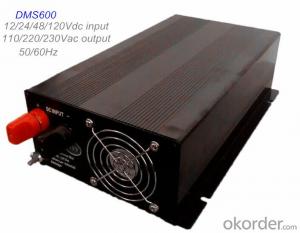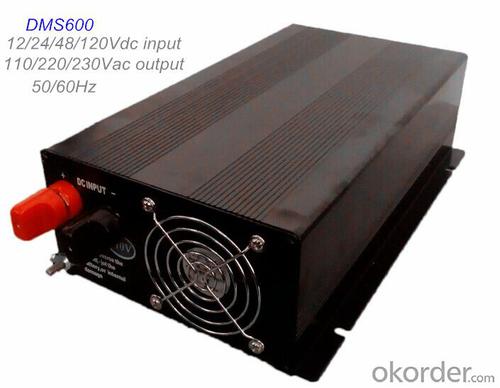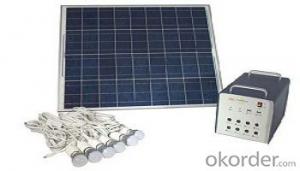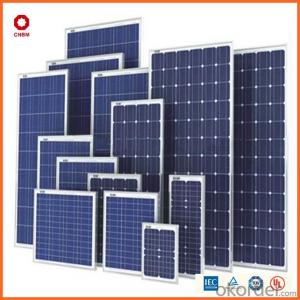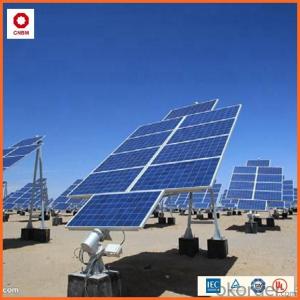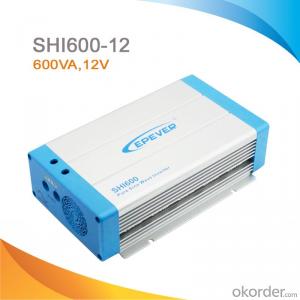Baywa R.E. Solar Energy Systems - DC/AC Solar Power Inverter/ DC AC Inverter 600W High Efficiency 12V/24V/36V/48/120V Input
- Loading Port:
- Qingdao
- Payment Terms:
- TT or LC
- Min Order Qty:
- 1 pc
- Supply Capability:
- 800 pc/month
OKorder Service Pledge
OKorder Financial Service
You Might Also Like
Specifications
1.Pure sine wave output(<2%THD)
2.High Efficiency 87%-90%
3.High motor start driven force
4.Function of battery protection
Product characteristic:
1.Pure sine wave output(<2%thd)
2.Input & Output fully isolation design
3.High Efficiency 87%-90%
4.High motor start driven force
5.5-stage thermal control fan
6.Function of battery protection
Technical Parameters:
Model | DMS600-122 | DMS600-242 | DMS600-362 | DMS600-482 | DMS600-602 | DMS600-1202 |
Continuous output power | 600W | 600W | 600W | 600W | 600W | 600W |
Max power output | 620W | 620W | 620W | 620W | 620W | 620W |
Peak instantaneous power | 1200W | 1200W | 1200W | 1200W | 1200W | 1200W |
Conversion efficiency | ≥87% | |||||
No -load current | 0.8A | 0.4A | 0.26A | 0.2A | 0.16A | 0.09A |
Output AC Voltage | 220/230/240/110/120/130V +5% | |||||
Output wave form | Sine wave < 2%THD | |||||
Frequency output | 50/60Hz+2% | |||||
Input Dc Voltage | 10-16VDC | 20-30VDC | 30-45VDC | 40-60VDC | 60-90VDC | 100-150VDC |
Fault display | Red lamp flickers and buzzer alarms | |||||
Working temperature | -20~55℃ | |||||
Function of protection | Alarm and protection in over loading, over voltage, low voltage, short circuit, over heating and converse connection, etc. | |||||
Fan | Thermal control | |||||
Product measurement | 320*182*81(mm) | |||||
Pack measurement | 370*220*140(mm) | |||||
Net weight | 3.8Kg | |||||
Gross weight | 4.1Kg | |||||
Application:
Electric tools:fretsaws, drills, mullers, grinder wheels, mowers, air compressors, etc.
Office equipment:computer, facsimile machines, scanners, etc.
Kitchen appliances:microwave oven, refrigerators, blenders, soybean juice machine, coffee makers, ovens, etc.
Lighting instruments: high pressure sodium lamp, compact fluorescent light, daylight lamp, halogen light, etc.
Home entertainment electronics:TV, blower, vacuum cleaners, fans, video games, musical instrument, charger, etc.
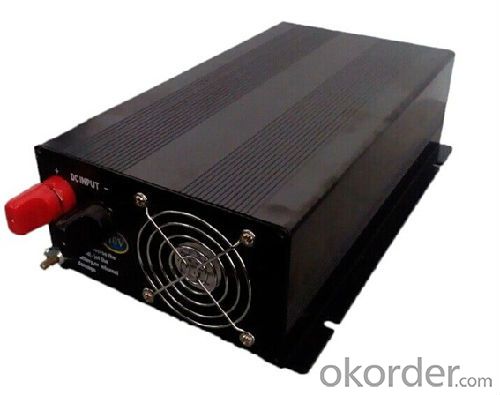
FAQ
Q1:Can we visit your factory?
A1:Sure,welcome at any time,seeing is believing.
Q2:Which payment terms can you accept?
A2:T/T,L/C,Moneygram,Paypal are available for us.
- Q: Can solar energy systems be used in areas with limited access to social services?
- Yes, solar energy systems can be used in areas with limited access to social services. Solar energy systems are independent of traditional power grids and can operate off-grid, making them suitable for remote and underserved areas. These systems can provide reliable and clean energy, improving the quality of life by powering essential services such as lighting, heating, and water pumping, even in areas with limited access to social services. Additionally, solar energy systems can contribute to economic development by reducing dependence on expensive and unreliable energy sources, promoting self-sufficiency, and enabling the growth of local businesses.
- Q: How long does it take to recoup the cost of installing a solar energy system?
- The time it takes to recoup the cost of installing a solar energy system varies depending on several factors such as the size of the system, the location, available incentives, energy usage, and electricity rates. On average, homeowners can expect to recoup their investment within 5 to 10 years. However, with the decreasing costs of solar panels and the availability of government incentives, some homeowners have reported recouping their costs within as little as 3 to 4 years.
- Q: What are the financial benefits of installing a solar energy system?
- The financial benefits of installing a solar energy system include reduced electricity bills as solar power generates free electricity from sunlight, potential savings on energy costs in the long run, decreased reliance on grid power and utility companies, potential eligibility for government incentives and tax credits, increased property value, and the possibility of selling excess energy back to the grid for additional income.
- Q: Do solar energy systems require a backup power source during outages?
- During power outages, solar energy systems usually do not need a backup power source. This is because solar panels are specifically designed to directly convert sunlight into electricity. As long as there is sunlight available, the solar panels will keep generating electricity, even when there is no power from the grid. However, it is important to mention that solar energy systems are typically connected to the electrical grid. Therefore, when there is a power outage and the grid goes down, the solar energy system will also be unable to supply electricity to the home or building. This is done to ensure the safety of utility workers who might be working on restoring power. To overcome this limitation and have electricity during outages, homeowners or businesses with solar energy systems have the option of using battery storage solutions. These batteries store any excess electricity generated by the solar panels, which can then be utilized as a backup power source when the grid is down. By incorporating a battery storage system, the solar energy system can continue to power essential appliances or even the entire home or building during outages, thereby maximizing the advantages of solar energy.
- Q: What is the role of a solar energy system installer?
- The role of a solar energy system installer is to design, install, and maintain solar energy systems for residential, commercial, and industrial buildings. They play a crucial role in the transition towards renewable energy sources and are responsible for ensuring that solar panels are properly installed and functioning efficiently. Firstly, a solar energy system installer evaluates the site where the solar panels will be installed. They assess factors such as the location, orientation, and shading of the site to determine the optimal design and placement of the panels. This involves conducting a thorough analysis of the site's solar potential and considering any potential obstacles that may affect the system's performance. Once the design is finalized, the installer procures the necessary equipment and materials required for the installation. This includes solar panels, inverters, mounting systems, and electrical components. They also ensure compliance with local building codes and regulations. The installation process involves mounting the solar panels on rooftops or on the ground, connecting them to the electrical system of the building, and wiring them to the inverters. Installers must have a strong understanding of electrical systems to ensure safe and efficient connection of the solar panels. After the installation, solar energy system installers conduct thorough testing and commissioning to ensure that the system is functioning properly. This includes checking the electrical connections, monitoring system performance, and troubleshooting any issues that may arise. In addition to installation, solar energy system installers are also responsible for providing maintenance and repair services. They perform regular inspections, clean the panels, and replace any damaged or faulty components to ensure optimal performance and longevity of the system. They may also assist with system upgrades or expansions as needed. Overall, the role of a solar energy system installer is crucial in promoting the adoption of renewable energy. They are responsible for the successful installation and maintenance of solar energy systems, enabling individuals and businesses to reduce their reliance on fossil fuels and contribute to a more sustainable future.
- Q: Can solar energy systems be used in areas with high levels of wildlife activity?
- Yes, solar energy systems can be used in areas with high levels of wildlife activity. While it is true that wildlife can pose some challenges for solar energy systems, there are several ways to mitigate these issues. One of the primary concerns is the risk of damage to the solar panels by large animals or birds. However, there are various protective measures that can be taken to prevent this. For instance, installing fencing or barriers around the solar panels can help keep wildlife away. Additionally, using anti-reflective coatings on the panels can reduce the likelihood of bird collisions. Another concern is the impact of solar energy systems on wildlife habitats. It is crucial to choose the location of the solar panels carefully, considering the existing wildlife activity in the area. By conducting thorough environmental impact assessments and engaging with local wildlife experts, it is possible to minimize any potential negative effects on wildlife habitats. Moreover, solar energy systems can actually benefit wildlife in some cases. For example, solar farms can provide additional shelter and shade for some species, and the open spaces underneath the panels can create new habitats for ground-dwelling animals. Overall, while there may be some challenges, with proper planning and mitigation strategies, solar energy systems can be successfully utilized in areas with high levels of wildlife activity.
- Q: How do solar energy systems affect the installation of satellite dishes?
- Solar energy systems can potentially affect the installation of satellite dishes by obstructing the line of sight between the dish and the satellite. It is important to carefully plan and position both the solar panels and satellite dish to ensure they do not interfere with each other.
- Q: Can solar energy systems be used for powering electric vehicle solar charging stations at airports?
- Solar energy systems are certainly capable of powering electric vehicle (EV) solar charging stations at airports. To achieve this, solar panels can be strategically installed on parking structures or near the charging stations, allowing them to capture sunlight and convert it into usable electricity. This generated electricity can then be utilized to power the EV charging stations, presenting a renewable and eco-friendly energy source. By utilizing solar energy to power EV charging stations at airports, numerous advantages are realized. Firstly, it reduces dependence on fossil fuels and significantly decreases greenhouse gas emissions, thus promoting a more sustainable and environmentally conscious transportation system. Secondly, airports are able to fulfill their renewable energy objectives and minimize their carbon footprint. Furthermore, solar-powered charging stations offer a reliable energy source, even during power outages or grid failures, ensuring uninterrupted charging services for electric vehicles. Additionally, airports are generally expansive areas that receive ample sunlight, making them an ideal location for solar installations. Through meticulous planning and design, solar panels can seamlessly integrate into the existing airport infrastructure, maximizing the potential for energy generation. This enables airports to achieve greater energy independence and reduce operational costs by generating their own electricity. To conclude, solar energy systems are a practical and efficient solution for powering electric vehicle solar charging stations at airports. By harnessing the power of the sun, airports can provide a clean and sustainable energy source for EVs, contributing to a greener transportation system and a more sustainable future.
- Q: Can solar energy systems be used for powering electric vehicle component manufacturing plants?
- Certainly, electric vehicle component manufacturing plants can make use of solar energy systems. Solar power is an abundant and sustainable source of electricity that can effectively meet the energy requirements of various industrial processes. By installing solar panels on the roofs or open areas surrounding the manufacturing facility, the plant can produce clean and emission-free electricity, reducing its dependence on conventional energy sources. Solar energy systems have the capacity to generate a significant amount of electricity, particularly when combined with advanced technologies like concentrated solar power or solar tracking systems. These systems efficiently capture sunlight and convert it into electricity, providing a reliable and consistent power source for the manufacturing plant. Furthermore, electric vehicle component manufacturing plants often consume substantial energy for activities such as machining, welding, and assembly. By utilizing solar power, these plants can not only fulfill their electricity needs but also lower their operational expenses and environmental impact. Solar energy contributes to achieving sustainability objectives and facilitates a cleaner and more eco-friendly manufacturing process. Moreover, the adoption of solar energy systems in electric vehicle component manufacturing plants can serve as an effective marketing tool. As the demand for electric vehicles and sustainable manufacturing practices continues to grow, consumers are increasingly attracted to companies that actively promote renewable energy. By powering their manufacturing plants with solar energy, companies can demonstrate their commitment to environmental responsibility and appeal to environmentally conscious customers. In conclusion, solar energy systems can indeed be employed to power electric vehicle component manufacturing plants. With their ability to generate clean, reliable, and cost-effective electricity, solar power plays a crucial role in meeting the energy requirements of these plants while promoting sustainability and reducing environmental impact.
- Q: Can solar energy systems be used for powering telecommunications infrastructure?
- Yes, solar energy systems can be used to power telecommunications infrastructure. Solar panels can be installed on rooftops or in open spaces to harness sunlight and convert it into electricity. This renewable energy can then be used to power communication towers, equipment, and other telecommunications infrastructure, providing a sustainable and reliable energy source. Additionally, solar energy systems can be combined with battery storage solutions to ensure uninterrupted power supply even during periods of low sunlight or at night.
Send your message to us
Baywa R.E. Solar Energy Systems - DC/AC Solar Power Inverter/ DC AC Inverter 600W High Efficiency 12V/24V/36V/48/120V Input
- Loading Port:
- Qingdao
- Payment Terms:
- TT or LC
- Min Order Qty:
- 1 pc
- Supply Capability:
- 800 pc/month
OKorder Service Pledge
OKorder Financial Service
Similar products
Hot products
Hot Searches
Related keywords
